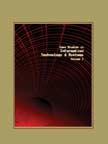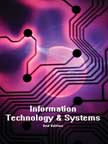Information Technology & Systems
 |
Details
Textbook Edition: II
Pages : 490;
Paperback;
210 X 275 mm approx.
Detail Table of Contents
Workbook Edition: II
Pages : 231; Paperback;
210 X 275 mm approx.
Pricing
Textbook Price: Rs. 900;
Workbook Price: Rs. 700;
Available only in INDIA
Computer Systems - An Overview : Chapter 1
SUMMARY:
Computers have become an integral part of our society irrespective of the field
of work. |
|
A computer follows the instructions given by the
program while it performs the four basic operations of Input, Processing,
Output, and Storage. The keyboard, the mouse, the microphone, etc., are the input devices which are used to enter data and instructions into the computer for processing the required information.
The Central Processing Unit (CPU) carries out the processing function of the computer; in this process, the CPU uses the Random-Access Memory (RAM). Monitors, speakers, printers, etc., are output devices through which the final computed or processed information can be obtained. The data, instructions, and the final processed information can be stored on the hard disks, floppy disks, CD-ROMs, USB pen drives, and other additional devices.
|
The Control Unit (CU) and the Arithmetic Logic Unit (ALU) are the two components of the CPU. The CU performs the four basic operations of: obtaining the instructions from the memory of the computer, decoding the instruction, executing the instruction, and writing the results onto the memory.
|
According to size and capacity, computers are classified into supercomputers, mainframes, minicomputers, microcomputers, and servers. Peripheral devices are devices that are attached to a computer system which augment the basic services provided by it. These can be the input devices, output devices, or various auxiliary storage units of a computer system.
Computer hardware refers to all the physical devices in the computer like the CPU, the monitor, and the printer that can be physically felt. Computer software consists of the programs that instruct the computer hardware. Both the hardware and software of a computer complement each other and should work together to produce useful output.
Related Books:-
 Case Studies in IT and Systems
Case Studies in IT and Systems
263 pages, Paperback
Available only in INDIA

